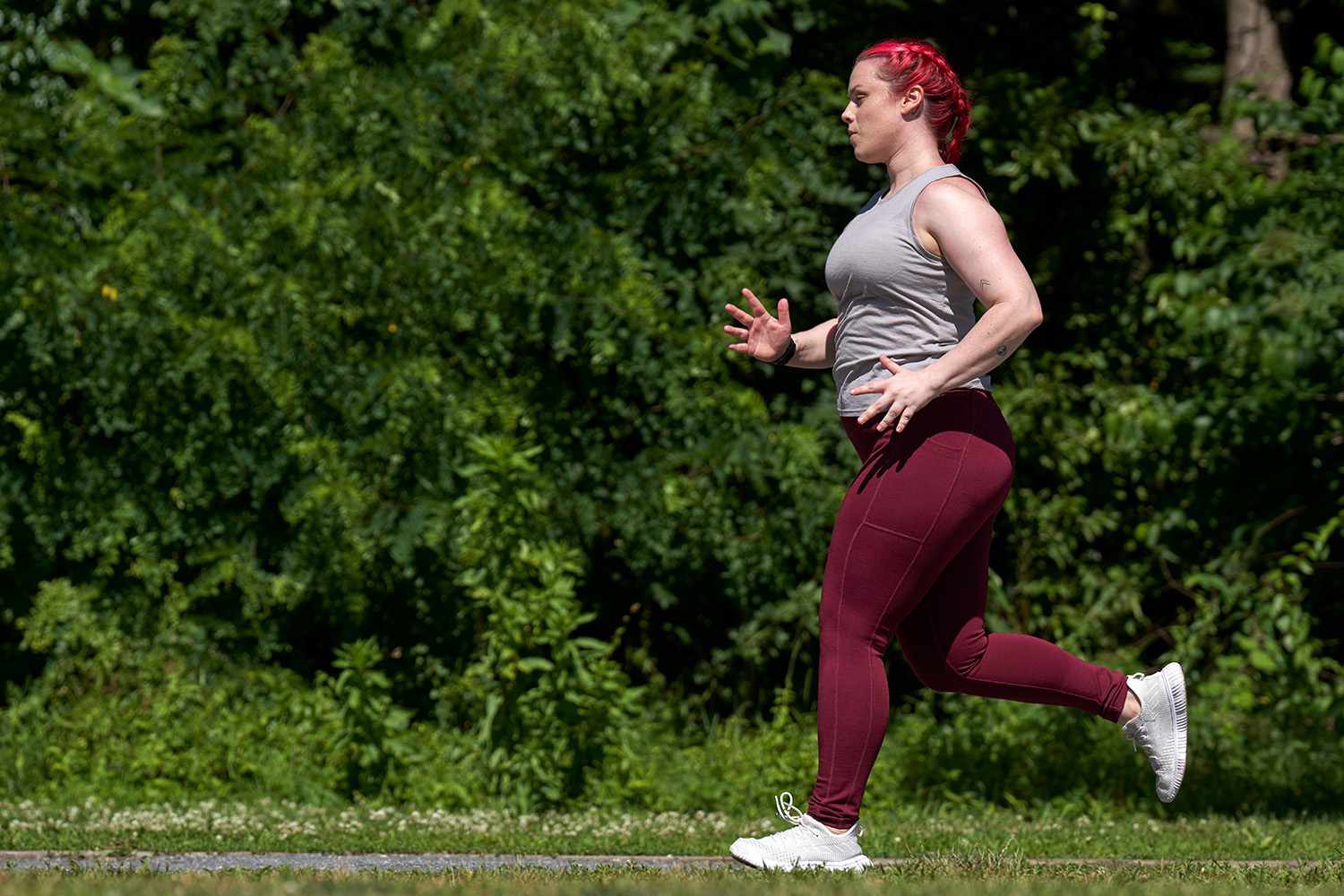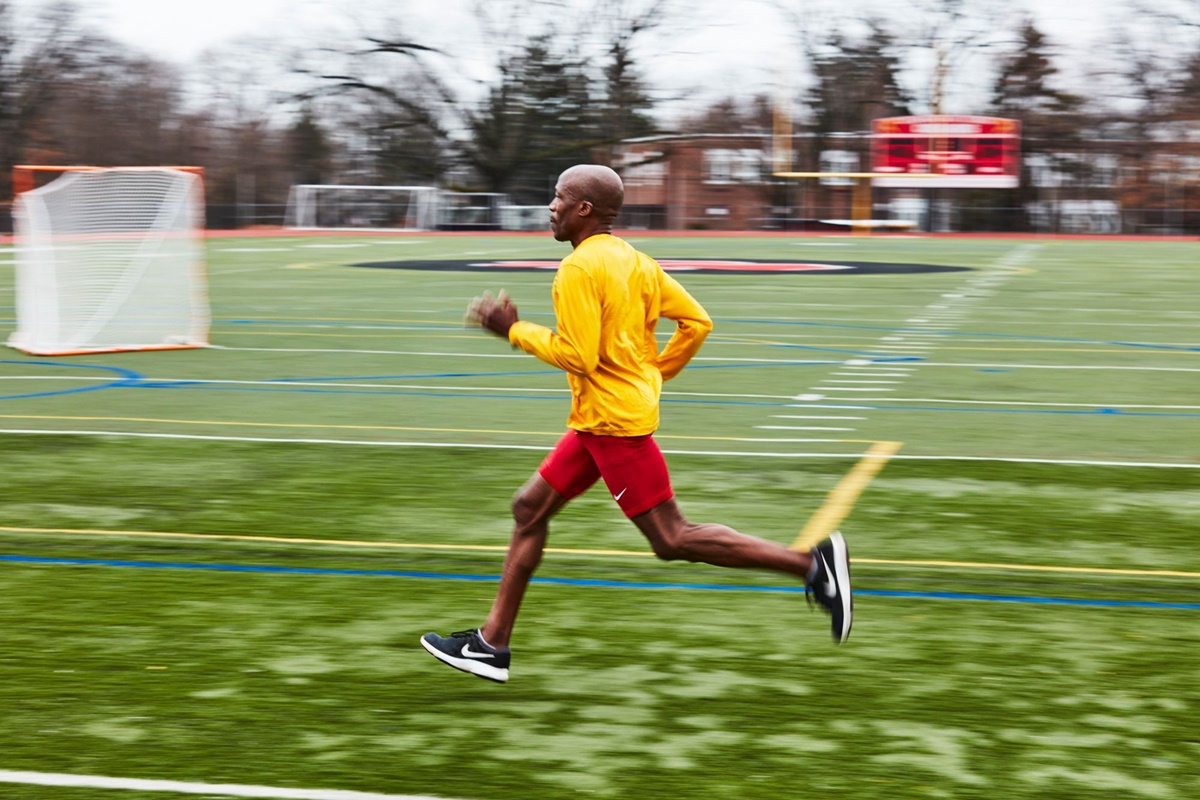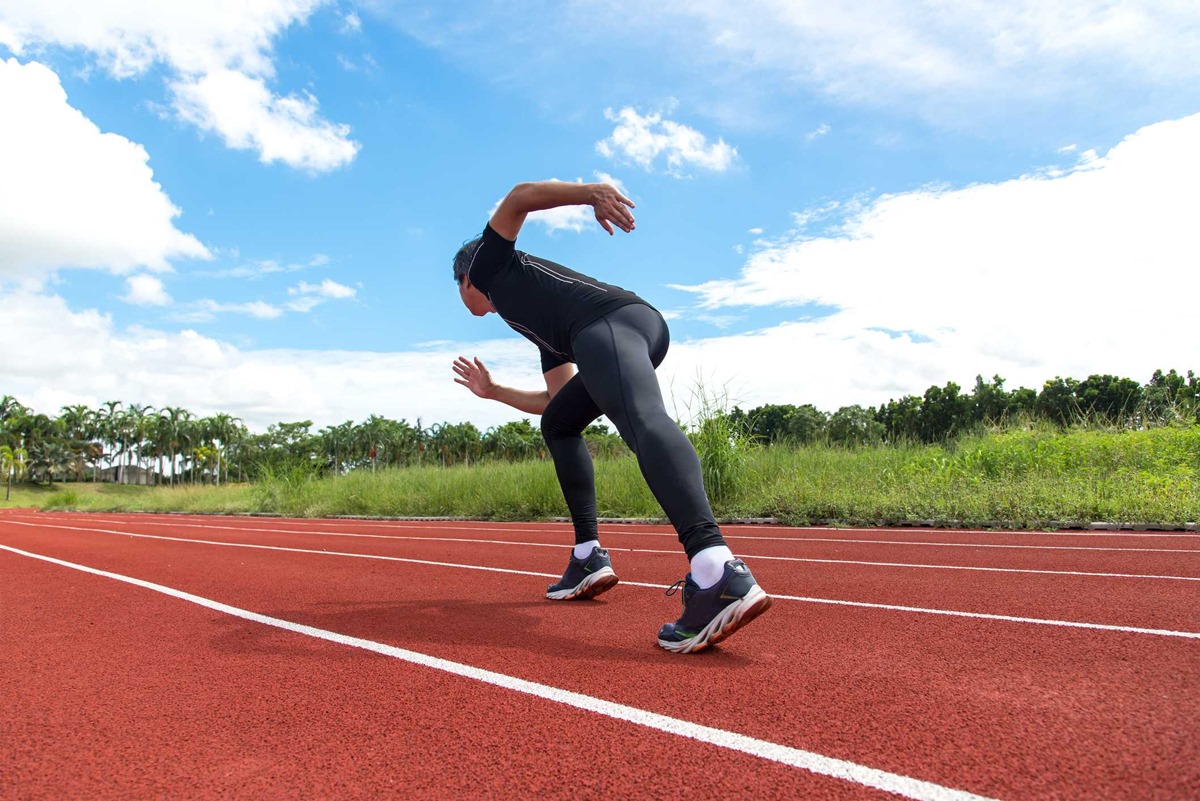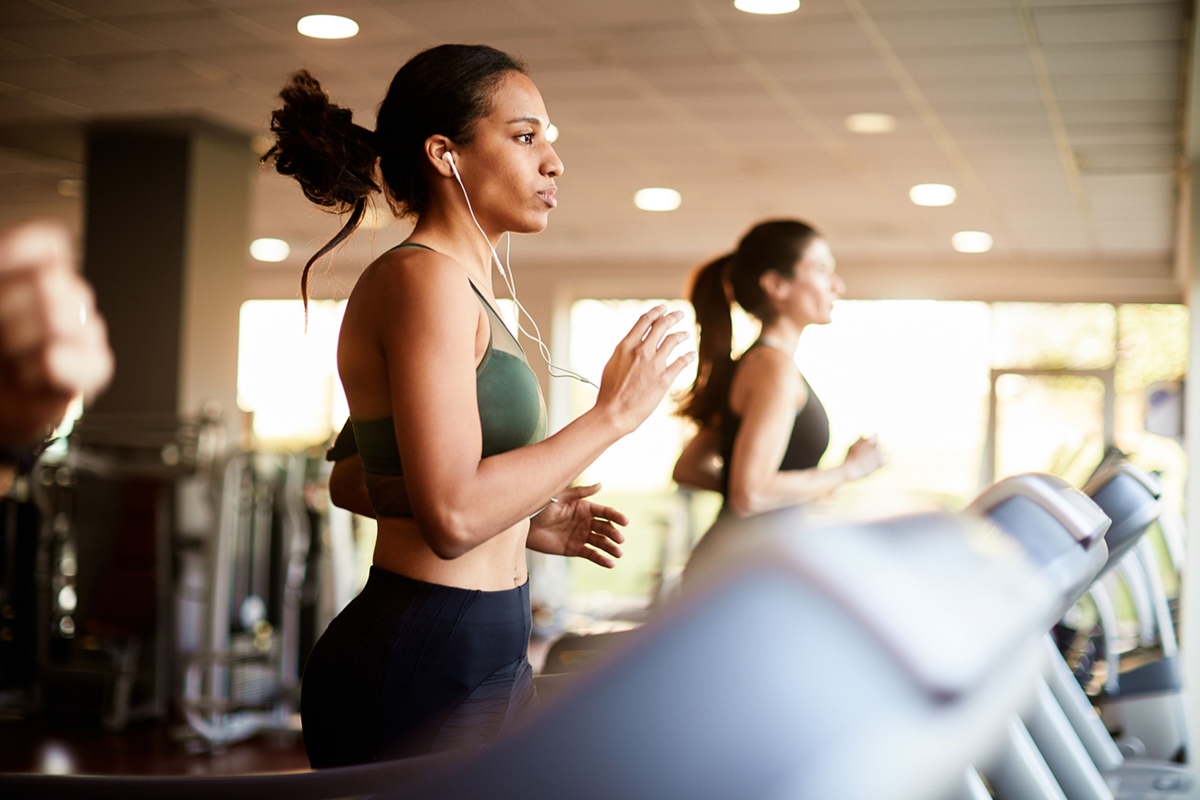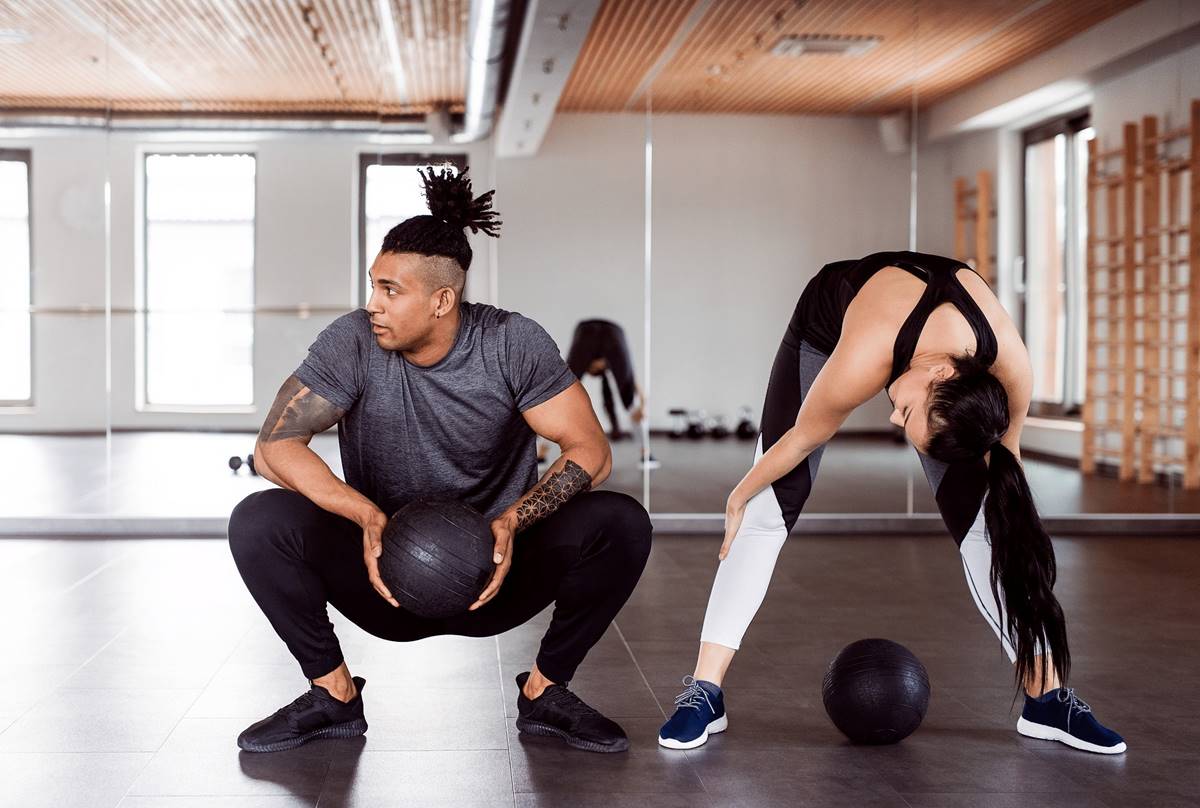Home>Misc>Featured>Which Of These Is The Most Effective Way To Rest After Exercise?
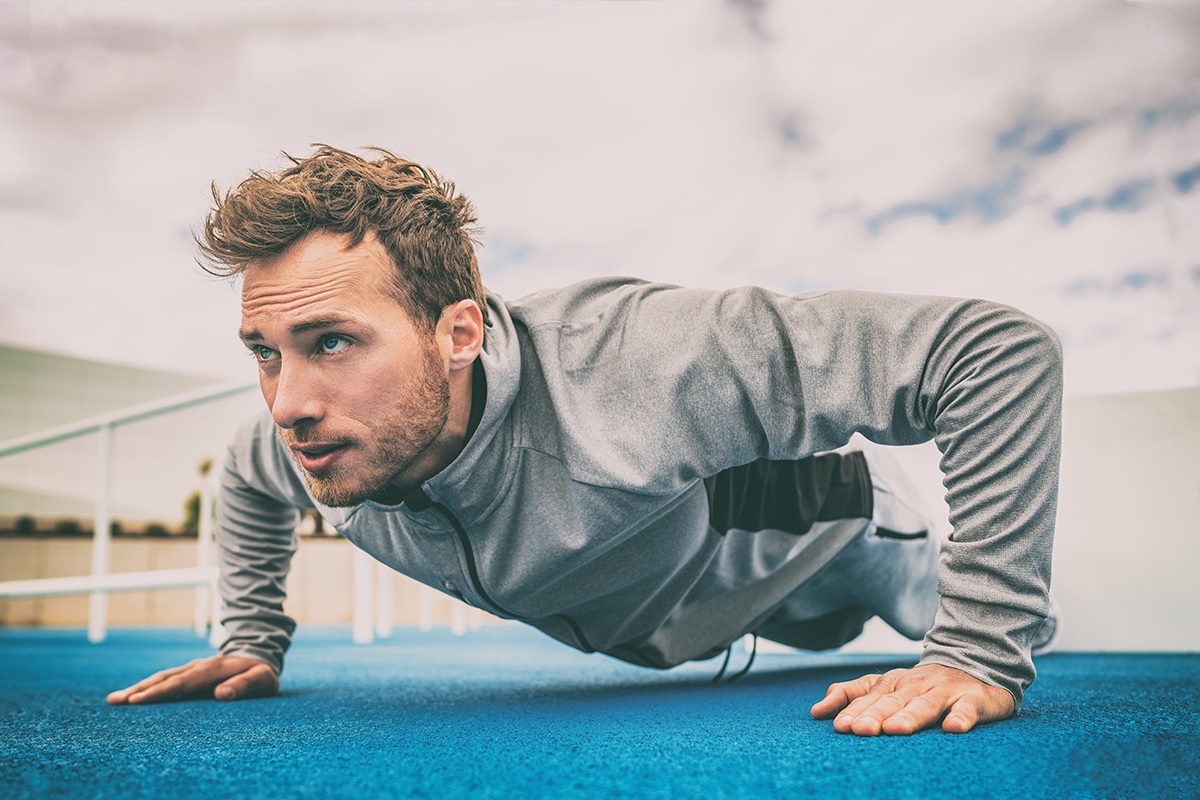

Featured
Which Of These Is The Most Effective Way To Rest After Exercise?
Published: October 3, 2023
Discover the most effective way to rest after exercise. Our featured guide provides insights on optimal post-workout recovery strategies.
Introduction
Resting after exercise is an integral part of any fitness routine. It allows your body to recover and adapt to the stress placed on it during physical activity. However, with so many different ways to rest, it can be challenging to determine which method is the most effective.
Effective rest goes beyond simply taking a break. It involves deliberate strategies and practices that amplify the benefits of exercise, promote muscle recovery, and prevent injuries. Whether you’re a seasoned athlete or just starting your fitness journey, choosing the right way to rest is crucial for optimizing your performance and overall well-being.
This article will explore various methods of rest after exercise and discuss their effectiveness. We will delve into passive rest, active rest, stretching, foam rolling, sleep, hydration, and nutrition. By understanding these different approaches, you can make informed decisions about your post-workout recovery and ensure you’re giving your body the rest it needs.
It’s important to note that the most effective way to rest can vary depending on individual fitness levels, goals, and preferences. What works for one person may not work for another. Therefore, it’s essential to experiment and find what works best for you.
Importance of Rest after Exercise
Resting after exercise is not just a luxury; it is a vital component of a well-rounded fitness routine. Here are some reasons why rest is crucial for your overall health and exercise performance:
- Muscle Repair and Recovery: When you exercise, microscopic tears occur in your muscle fibers. Rest allows for these tears to heal and for muscle tissues to repair themselves. This is essential for muscle growth and strengthening. Without adequate rest, your muscles may become overworked, leading to decreased performance and increased risk of injury.
- Energy Restoration: Physical activity depletes your body’s energy stores. Resting allows your body to replenish these energy reserves, restoring your energy levels and helping you perform at your best during subsequent workouts.
- Prevention of Overtraining: Overtraining occurs when you exercise excessively without giving your body enough time to recover. This can lead to fatigue, decreased performance, and increased susceptibility to injuries. Rest days help prevent overtraining and allow your body to adapt to the stress of exercise.
- Improved Mental Well-being: Exercise stimulates the release of endorphins, which are known as “feel-good” hormones. However, chronic exercise without rest can cause mental fatigue, irritability, and decreased motivation. Rest days provide an opportunity to rejuvenate your mental state, reducing stress and enhancing your overall well-being.
- Enhanced Performance: Taking adequate rest between workouts can actually improve your performance. It allows you to maintain proper form, avoid muscle imbalances, and perform at your optimal level. Resting also gives your nervous system time to recover, leading to better coordination and reaction times.
It’s important to strike a balance between challenging your body with exercise and allowing it time to recover. Skipping rest days or not prioritizing rest can lead to diminished results and an increased risk of injuries. Remember that rest is not a sign of weakness; it is an essential aspect of any effective fitness program.
Different Ways to Rest after Exercise
Resting after exercise doesn’t necessarily mean lying down on the couch all day. There are various ways to rest and promote recovery, each with its own benefits. Here are some different methods you can incorporate into your post-workout routine:
- Passive Rest: This form of rest involves complete rest and relaxation. It can include activities such as lounging, taking a nap, or simply sitting quietly. Passive rest allows your body to shift into a parasympathetic state, promoting muscle relaxation and tissue repair.
- Active Rest: Active rest involves engaging in low-intensity activities that are different from your usual exercise routine. It could be going for a leisurely walk, practicing gentle yoga, or performing light stretching. Active rest helps improve blood circulation, flush out metabolic waste, and enhance muscle recovery.
- Stretching: Stretching exercises focus on lengthening muscles and improving flexibility. Post-workout stretching can alleviate muscle soreness, enhance range of motion, and prevent muscle imbalances. Incorporate static stretches (holding a stretch for a certain period) and dynamic stretches (gentle, controlled movements) into your routine.
- Foam Rolling: Foam rolling, also known as self-myofascial release, involves using a foam roller to apply pressure on specific muscles. This practice helps release tension, increase blood flow, and reduce muscle soreness. Foam rolling can target tight areas and trigger points, promoting muscle recovery and decreasing the risk of injury.
- Sleep: Quality sleep is essential for your body to recover and repair. During sleep, your body releases growth hormones that facilitate muscle recovery and tissue repair. Aim for 7-9 hours of quality sleep each night to maximize the benefits of your exercise efforts.
- Hydration: Proper hydration is key for post-exercise recovery. Water helps transport nutrients to your muscles and removes waste products. Drink plenty of water before, during, and after your workouts to maintain optimal hydration levels.
- Nutrition: Consuming the right nutrients after exercise is crucial for recovery. Focus on consuming a combination of carbohydrates and proteins to replenish glycogen stores and support muscle repair. Include foods like lean meats, whole grains, fruits, and vegetables in your post-workout meal.
It’s important to note that the most effective way to rest after exercise may vary depending on factors such as the intensity and duration of your workout, your fitness level, and your individual preferences. Experiment with different methods and find what works best for you. Remember that rest is an essential part of the fitness equation and is just as important as the exercise itself.
Passive Rest
Passive rest involves allowing your body to fully relax and recover after exercise. It is a form of rest where you minimize physical activity and engage in activities that promote relaxation and restoration. Passive rest can be beneficial for both your body and mind. Here are some ways you can incorporate passive rest into your post-workout routine:
1. Resting and Relaxing: Find a comfortable space where you can lie down or sit quietly. Give yourself permission to take a break from physical exertion and let your body unwind. This can involve activities like reading a book, listening to calming music, or simply enjoying a moment of stillness.
2. Taking a Nap: If you have the time and opportunity, taking a short nap can be incredibly rejuvenating. A power nap of 20-30 minutes can help restore your energy levels and promote mental clarity. Be mindful not to nap for too long, as it may disrupt your sleep patterns later on.
3. Deep Breathing and Meditation: Deep breathing exercises and meditation can help activate the relaxation response in your body. Dedicate a few minutes to slow, deep breaths, focusing on inhaling and exhaling fully. Incorporate meditation techniques, such as mindfulness or guided meditation, to promote mental relaxation and reduce stress.
4. Heat Therapy: Treat yourself to a warm bath, sauna session, or hot shower. Heat therapy can help relax your muscles, relieve tension, and improve blood circulation. It can be particularly beneficial for soothing sore muscles and promoting relaxation after intense workouts.
5. Massage: Consider getting a professional massage or using self-massage techniques to release muscle tension. Massages can improve blood flow, reduce muscle soreness, and promote relaxation. You can also use tools like foam rollers or massage balls to target specific areas of tension.
6. Mindful Activities: Engage in activities that promote mindfulness and presence, such as gentle yoga or tai chi. These practices can help connect your mind and body, promote relaxation, and improve overall well-being.
7. Disconnecting from Technology: Take a break from screens and digital devices. Constant exposure to screens can be mentally draining and disrupt sleep patterns. Instead, engage in activities that allow you to disconnect and recharge, such as reading a book, spending time in nature, or enjoying a hobby.
Incorporating passive rest into your post-workout routine is important for allowing your body to recover and adapt to the demands of exercise. It promotes muscle repair, reduces the risk of overtraining, and enhances overall well-being. Experiment with different passive rest activities and find what helps you relax, rejuvenate, and restore after exercise.
Active Rest
Active rest is a form of rest that involves light physical activity instead of complete inactivity. Unlike passive rest, active rest keeps your body moving, albeit at a lower intensity. It helps promote blood circulation, muscle recovery, and overall well-being. Here are some ways to incorporate active rest into your post-exercise routine:
1. Walking: Going for a leisurely walk is one of the simplest and most effective forms of active rest. It helps improve blood flow, aids in flushing out metabolic byproducts from your muscles, and promotes recovery. Take a stroll outdoors or on a treadmill for 15-30 minutes after your workouts to reap the benefits of active rest.
2. Gentle Yoga: Practicing gentle yoga poses can help release muscle tension, enhance flexibility, and promote relaxation. Choose a yoga flow or sequence that focuses on gentle stretching and calming movements. This will help improve circulation, reduce muscle soreness, and improve your overall well-being.
3. Low-Impact Cardio: Engaging in low-impact cardiovascular exercises, such as swimming, cycling, or using an elliptical machine, can be a beneficial way to engage in active rest. These exercises are less intense and put less stress on your joints, while still helping to increase blood flow and oxygen delivery to your muscles.
4. Bodyweight Exercises: Incorporating bodyweight exercises, like squats, lunges, push-ups, and planks, into your active rest routine can provide a light workout for your muscles. These exercises help maintain muscle tone and engagement without overexerting yourself.
5. Pilates: Pilates is a low-impact exercise method that focuses on strength, flexibility, and body awareness. It utilizes controlled movements and emphasizes core stability. Incorporating Pilates exercises into your active rest routine can help improve posture, strengthen muscles, and promote efficient movement patterns.
6. Light Stretching: While passive stretching is more focused on relaxation, active rest can involve dynamic stretching. Dynamic stretching involves gentle, controlled movements that help increase blood flow, warm up muscles, and improve flexibility. Incorporate movements like arm swings, leg swings, and trunk twists into your routine.
7. Mindful Movement: Engage in activities that promote mindfulness and body awareness, such as tai chi or qigong. These practices involve slow, deliberate movements combined with deep breathing, helping to reduce stress, improve balance, and enhance well-being.
Active rest allows for a break from high-intensity exercise while still keeping your body in motion. It enhances blood circulation, promotes recovery, and helps maintain an active lifestyle. Incorporate active rest activities that you enjoy and that complement your fitness goals, ensuring you strike the right balance between exertion and rest.
Stretching
Stretching is an essential component of any post-exercise routine. It involves gentle elongation of the muscles and connective tissues, promoting flexibility, range of motion, and overall muscle health. Stretching after a workout can help prevent muscle imbalances, reduce muscle soreness, and enhance recovery. Here are different types of stretching exercises you can incorporate into your post-workout stretch routine:
1. Static Stretching: This is the most common type of stretching where you hold a stretch for a certain period while maintaining a relaxed position. Static stretches help to lengthen and elongate muscles, promoting flexibility and relieving muscle tension. Focus on stretching major muscle groups, such as hamstrings, quadriceps, calves, and chest, for 20-30 seconds per stretch.
2. Dynamic Stretching: Dynamic stretching involves moving parts of your body through a full range of motion in a controlled manner. It helps warm up your muscles, improve blood flow, and prepare your body for physical activity. Examples of dynamic stretches include leg swings, arm circles, and walking lunges.
3. Proprioceptive Neuromuscular Facilitation (PNF): PNF stretching involves a combination of stretching and contracting muscles. It is typically done with a partner or by using resistance, and it helps improve flexibility and increase the range of motion. The most common PNF technique is called “contract-relax,” where you stretch the muscle, contract it for a few seconds, and then relax into a deeper stretch.
4. Active Isolated Stretching (AIS): AIS is a dynamic stretching technique that involves holding a stretch for only 1-2 seconds. It is then released, followed by repeating the stretch multiple times. The focus is on isolating specific muscles and joints, enhancing flexibility and reducing muscle tightness.
5. Yoga Stretching: Yoga incorporates various stretching poses that target different muscle groups and promote flexibility, strength, and balance. Poses such as downward dog, child’s pose, and pigeon pose can help release tension, improve muscular imbalances, and promote relaxation after exercise.
Stretching after exercise helps to cool down your body, improve flexibility, and reduce the risk of injury. It is important to remember a few guidelines when stretching: warm up your muscles before stretching, avoid bouncing or jerking movements, and breathe deeply throughout each stretch. It is beneficial to consult a qualified fitness professional or physical therapist to ensure you are performing stretches correctly and targeting specific muscle groups.
Lastly, listen to your body during stretching. Do not push beyond your comfort zone or force a stretch that causes pain. Stretching should be gentle and performed with proper technique to maximize its benefits. Make stretching a regular part of your post-workout routine to promote muscle recovery, prevent tightness, and enhance your overall fitness and flexibility.
Foam Rolling
Foam rolling, also known as self-myofascial release, is a popular technique that involves using a foam roller to apply pressure to specific muscles and soft tissues. Foam rolling helps release muscle tension, improve flexibility, and enhance post-workout recovery. Here’s what you need to know about incorporating foam rolling into your routine:
1. How It Works: Foam rolling works by applying gentle pressure to tight or knotted areas of muscles, known as trigger points. By rolling over these areas, you can help relax the muscles, break up adhesions, and improve blood flow to the tissues. This can alleviate muscle soreness, increase mobility, and reduce the risk of injury.
2. Technique: To foam roll effectively, position yourself on top of the foam roller and use your body weight to apply pressure to the targeted area. Roll slowly and mindfully over the muscle, focusing on any knots or tight spots. Spend about 20-30 seconds on each area, allowing the pressure to gradually release the tension in the muscle.
3. Targeted Muscles: Foam rolling can be performed on various muscle groups, including the calves, quads, hamstrings, glutes, IT band, and upper back. It’s important to work on both sides of the body to maintain balance and symmetry. Customize your foam rolling routine based on your specific areas of tightness or soreness.
4. Benefits: Foam rolling offers several benefits for post-exercise recovery. It helps increase blood flow and oxygen delivery to the muscles, which aids in removing metabolic waste and reducing inflammation. Foam rolling can also relieve muscle soreness, decrease muscle tightness, and improve overall muscle function.
5. Precautions: While foam rolling can be very beneficial, it’s important to use proper technique and listen to your body’s feedback. Avoid rolling directly over bony areas or joints, as this can be uncomfortable or even cause injury. If you experience sharp or intense pain, discontinue rolling and consult a healthcare professional.
6. Incorporating Foam Rolling: Foam rolling can be done as part of your cool-down routine after a workout or as a stand-alone recovery session. Aim to foam roll for around 5-10 minutes, targeting different muscle groups each time. You can also incorporate foam rolling into your pre-workout warm-up to help prepare your muscles for exercise.
7. Complement to Stretching: Foam rolling can be used in combination with stretching exercises to maximize your muscle recovery. Foam rolling helps release muscle tension and reduces knots, while stretching helps elongate and improve flexibility. By incorporating both techniques into your routine, you can enhance your overall mobility and muscular health.
Foam rolling is a versatile and accessible tool that can significantly benefit your post-workout recovery. By adding foam rolling to your routine, you can reduce muscle soreness, improve flexibility, and optimize your overall exercise performance.
Sleep
Sleep plays a vital role in post-workout recovery and overall well-being. It is during sleep that your body repairs and regenerates tissues, releases growth hormones, and consolidates memories. Achieving quality sleep is crucial for muscle recovery and optimizing exercise performance. Here’s why sleep is essential and how you can improve your sleep for better post-exercise recovery:
1. Muscle Repair and Growth: During sleep, your body produces and releases growth hormones that stimulate muscle repair and growth. This is especially important after exercise when your muscles need to recover from the stress and strain placed on them. Good quality sleep allows your muscles to repair themselves and become stronger.
2. Hormone Regulation: Sleep plays a critical role in regulating hormones that affect your appetite, metabolism, and energy balance. Lack of sleep can disrupt the balance of hormones like ghrelin and leptin, which control hunger and satiety, leading to increased food cravings and potential weight gain. Adequate sleep can help you maintain a healthy body weight and support your fitness goals.
3. Mental Restoration: Physical exercise not only challenges your muscles but also taxes your mental and cognitive capacities. Sleep is necessary for restoring mental alertness, concentration, and overall cognitive function. It enhances mood, memory consolidation, and decision-making abilities, helping you perform better mentally and physically.
4. Sleep Quality: It’s not just about the quantity of sleep but also the quality. Aim for 7-9 hours of uninterrupted, restful sleep each night to reap the full benefits of sleep. Create a sleep environment that is cool, dark, and free from distractions. Establish a consistent sleep routine by going to bed and waking up at the same time each day, even on weekends.
5. Sleep Hygiene: Adopt healthy sleep habits to promote better sleep quality. Avoid stimulating activities close to bedtime, such as intense exercise or excessive screen time, as they can interfere with your ability to fall asleep. Create a relaxing pre-bedtime routine, which may include activities like reading, taking a warm bath, or practicing relaxation techniques like deep breathing or meditation.
6. Avoid Stimulants: Limit your intake of caffeine and alcohol, especially in the evening, as they can disrupt sleep patterns. Caffeine can interfere with falling asleep, while alcohol can disrupt the quality of sleep by causing frequent awakenings during the night.
7. Seek Professional Help: If you consistently struggle with sleep disturbances or insomnia, consult with a healthcare professional. They can help identify any underlying sleep disorders or provide guidance on techniques to improve your sleep quality and overall well-being.
Prioritizing sleep as part of your post-exercise recovery routine is essential. By getting sufficient, restful sleep, you give your body the time it needs to repair, rejuvenate, and optimize its performance. Make sleep a priority and reap the benefits of improved muscle recovery, enhanced cognitive function, and overall physical and mental well-being.
Hydration
Hydration is a critical aspect of post-exercise recovery. When you exercise, your body loses water through sweat, and it’s essential to replenish these fluid levels for optimal recovery and overall health. Staying properly hydrated offers numerous benefits, including improved muscle function, enhanced exercise performance, and efficient recovery. Here’s why hydration matters and how you can stay hydrated after exercise:
1. Muscle Function: Adequate hydration is crucial for proper muscle function. Water helps transport nutrients to your muscles, enabling them to perform optimally during exercise. Without proper hydration, muscle cramps, fatigue, and impaired muscle function may occur, hindering your performance and recovery.
2. Electrolyte Balance: Electrolytes, such as sodium, potassium, and magnesium, play a key role in muscle contraction, nerve function, and fluid balance in your body. Sweating during exercise can lead to electrolyte loss, so it’s essential to replenish them through proper hydration. Consuming electrolyte-rich fluids or incorporating electrolyte supplements can help maintain the electrolyte balance necessary for optimal recovery.
3. Temperature Regulation: Hydration is essential for regulating body temperature. During exercise, your body produces heat, and sweating is the body’s way of cooling down. If you’re dehydrated, your body may struggle to regulate its temperature effectively, leading to an increased risk of heat-related illness and decreased performance.
4. Fluid Balance: Proper hydration supports fluid balance in your body, which is crucial for overall well-being. It helps maintain blood volume, supports the transport of oxygen and nutrients, and aids in the removal of metabolic waste products from your muscles. This facilitates the recovery process and helps prevent muscle soreness and fatigue.
5. Signs of Dehydration: It’s important to recognize signs of dehydration and address them promptly. Common signs include increased thirst, dry mouth, dark yellow urine, fatigue, dizziness, and decreased urine output. If you experience any of these symptoms, it’s crucial to drink fluids and rehydrate as soon as possible.
6. Post-Exercise Hydration: After exercise, replenish the fluids you’ve lost by drinking water or hydrating beverages. Aim to drink enough to satisfy your thirst and restore your hydration levels. Remember that individual fluid needs vary based on factors such as exercise intensity, duration, and sweat rate.
7. Pre- and Post-Workout Hydration: Prioritize hydration before and after your workouts. Drink water or a hydrating beverage before your exercise session to ensure you start off properly hydrated. After your workout, consume fluids within the first hour to help replenish your body’s water and electrolyte stores.
Make hydrating a consistent part of your post-exercise routine. Keep a water bottle with you during workouts, drink water regularly throughout the day, and pay attention to your body’s signals of thirst. Staying properly hydrated will support your recovery, optimize exercise performance, and keep you feeling energized and ready for your next workout.
Nutrition
Nutrition plays a vital role in post-exercise recovery. After a workout, your body needs the right nutrients to repair and rebuild muscles, replenish energy stores, and promote overall recovery. Good nutrition supports your fitness goals, enhances exercise performance, and ensures optimal recovery. Here are some key considerations for post-exercise nutrition:
1. Macronutrients: Focus on consuming a combination of macronutrients after exercise. Carbohydrates replenish glycogen stores, proteins support muscle repair and growth, and fats provide energy and aid in nutrient absorption. Include a balance of these macronutrients in your post-workout meal or snack.
2. Timing: Aim to eat a balanced meal or snack within 1-2 hours after your workout. This timeframe is crucial for maximizing the benefits of nutrient absorption and muscle recovery. If you’re not able to eat a full meal, have a nutritious snack immediately after your workout to provide your body with essential nutrients.
3. Protein: Protein is essential for muscle repair and growth after exercise. Include a serving of high-quality protein in your post-workout meal, such as lean meats, poultry, fish, eggs, legumes, or dairy products. Consider options like whey protein powder if you prefer a quick and convenient source of protein.
4. Carbohydrates: Consuming carbohydrates after exercise helps replenish glycogen stores, which are a primary source of energy during physical activity. Include complex carbohydrates like whole grains, fruits, and vegetables in your post-workout meal to replenish these energy reserves.
5. Hydration: Proper hydration is crucial for post-exercise recovery. Remember to hydrate with water or a sports drink that contains electrolytes to replace fluids lost through sweat. Adequate hydration aids in nutrient absorption, supports muscle repair, and prevents dehydration-related fatigue.
6. Vitamins and Minerals: Nutrients like vitamin C, vitamin E, and antioxidants play a vital role in fighting oxidative stress and reducing inflammation. Include foods rich in these micronutrients, such as fruits, vegetables, nuts, and seeds, in your post-workout meals to support overall recovery.
7. Meal or Snack Ideas: Some post-workout meal ideas include a chicken breast with quinoa and roasted vegetables, a protein-packed smoothie with fruits and Greek yogurt, or a whole-grain wrap with lean turkey, vegetables, and avocado. These options provide a balance of macronutrients to aid in recovery.
Remember that individual nutritional needs vary based on factors such as exercise intensity, duration, and personal goals. Consulting with a registered dietitian or nutritionist can provide personalized guidance on optimizing your post-exercise nutrition.
Paying attention to your nutrition after workouts is essential for maximizing recovery, supporting muscle growth, and optimizing your fitness progress. By fueling your body with the right nutrients, you’ll enhance your performance, prevent muscle breakdown, and be ready to tackle your next workout with energy and enthusiasm.
Factors to Consider when Choosing the Most Effective Way to Rest
When it comes to choosing the most effective way to rest after exercise, there are several factors to consider. What works for one person may not work for another, so it’s important to take these factors into account when deciding on your post-workout recovery strategy. Here are some key factors to consider:
1. Fitness Level and Goals: Your current fitness level and specific goals play an important role in determining the most effective way to rest. If you’re a beginner or have just started a new exercise routine, you may require more rest as your body adjusts to the increased activity. On the other hand, if you’re an athlete or have specific performance goals, you may need more targeted and intense recovery strategies.
2. Exercise Intensity and Duration: The intensity and duration of your workout can impact the type of rest you need. High-intensity workouts that place significant stress on your muscles may necessitate more focused recovery techniques like foam rolling or stretching. Longer duration workouts may require more time for passive rest and sleep to allow for full muscle repair.
3. Personal Preference: Everyone has different preferences when it comes to rest and recovery. Some individuals may find passive rest activities like lying down or taking a nap to be the most effective way to unwind after a workout. Others may prefer active rest activities like walking or engaging in light stretching. Consider what type of rest resonates with you and feels the most rejuvenating.
4. Time Constraints: Your schedule and time constraints can impact the options available for rest and recovery. If you have limited time, you may need to prioritize specific strategies that can be done quickly, such as hydration, nutrition, or targeted stretching exercises. However, if you have more time available, you can incorporate a combination of rest techniques to maximize recovery.
5. Individual Response: Pay attention to how your body responds to different rest strategies. Keep track of how you feel after various forms of rest and note any changes in muscle soreness, energy levels, and overall recovery. This self-awareness will help you identify the most effective rest techniques for your specific needs.
6. Combination Approach: In many cases, a combination of different rest techniques may be the most effective approach. Experiment with combining passive and active rest, stretching, foam rolling, proper hydration, and nutrition to find the perfect post-workout recovery routine that works for you.
7. Listen to Your Body: Ultimately, the most important factor to consider is listening to your body. It provides valuable feedback on what it needs to recover and thrive. If a particular form of rest feels too strenuous or doesn’t seem to provide the desired benefits, adjust and try other methods. Your body knows best, so tune in and respect its signals.
Remember, rest is a crucial component of any exercise routine. By considering these factors and tailoring your rest and recovery strategies to your specific needs, you can optimize your post-exercise recovery, enhance performance, and achieve your fitness goals.
Conclusion
Resting after exercise is not a luxury, but an essential part of any effective fitness routine. It allows your body to recover, repair, and adapt to the physical stress you put it through during workouts. Choosing the most effective way to rest depends on various factors, including your fitness level, goals, personal preferences, and the intensity and duration of your workouts.
Passive rest, such as taking a nap or practicing relaxation techniques, can promote muscle relaxation and tissue repair. Active rest, like light walking or gentle yoga, can improve blood circulation and promote recovery. Stretching and foam rolling help relieve muscle tension and enhance flexibility. Sleep is crucial for muscle repair, hormone regulation, and mental well-being. Proper hydration and nutrition replenish your body’s water and nutrient stores. Considering all these factors and listening to your body’s needs can guide you in choosing the most effective rest techniques.
Remember, there is no one-size-fits-all approach to rest. Experiment and find what works best for you. Incorporate a combination of rest techniques into your routine to optimize your recovery. Prioritize sleep, hydration, and nutrition as fundamental aspects of your post-exercise routine. Stay consistent, and adapt your rest strategies based on your changing needs and fitness goals.
Incorporating effective rest after exercise will not only aid in your physical recovery but also contribute to your overall well-being. It will enhance your performance, prevent injuries, and allow you to sustain a consistent fitness routine over the long term. So take the time to rest, rejuvenate, and let your body reset for continued success on your fitness journey.



